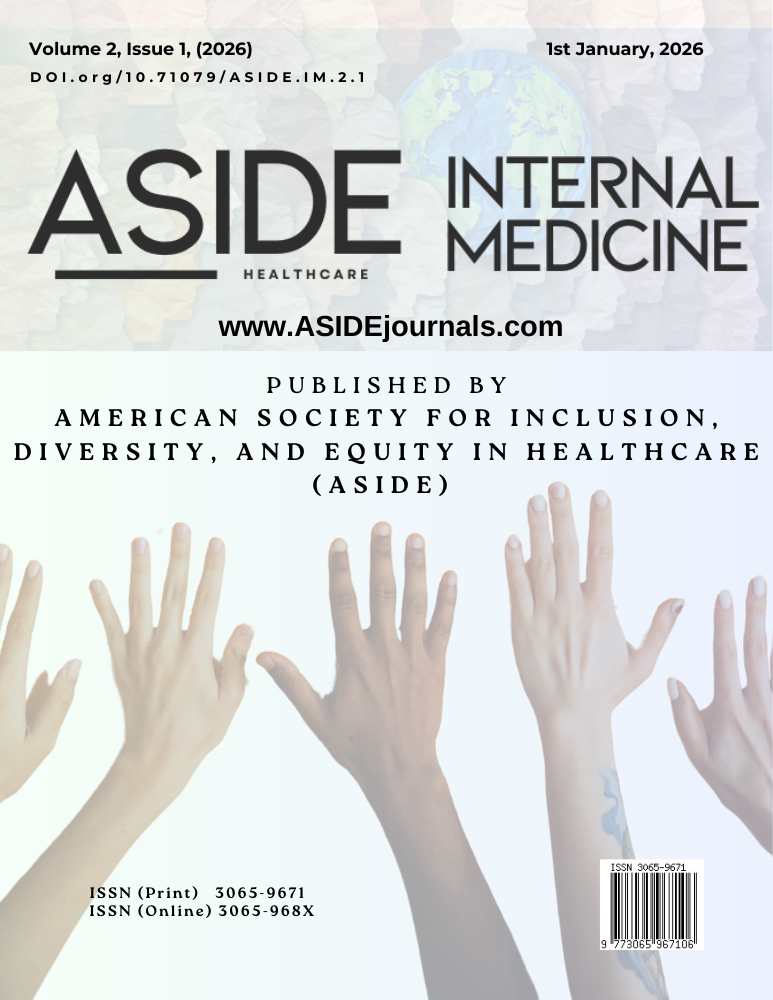Abstract
Introduction: Inguinal hernia is one of the most common surgical conditions, particularly among males. Despite its prevalence, limited regional data exist on the associated risk factors in Iraq. This study aimed to identify socio-demographic, lifestyle, and clinical risk factors contributing to inguinal hernia among male patients.
Methods: A case-control study was conducted on 250 male patients diagnosed with inguinal hernia at multiple public hospitals and surgical clinics across three major cities in Iraq: Wasit, Baghdad, and Basra. Compared with a 250-member control group. Data were collected using structured questionnaires covering socio-demographic details, occupational exposure, lifestyle habits, medical history, and family history. Univariate and logistic regression analyses were performed to identify significant risk factors.
Results: Most patients (57.5%) were between 41 and 60 years old. Heavy lifting (63.6%), smoking(62.0%), chronic cough (38.6%), and constipation (32.4%) were frequently reported. A positive family history was noted in 22.4% of cases. Univariate analysis revealed significant associations between inguinal hernia and heavy lifting (p < 0.001), smoking (p < 0.001), chronic cough (p = 0.002), constipation (p = 0.020), and a family history of inguinal hernia (p = 0.001). Logistic regression confirmed heavy lifting (OR=2.78), family history (OR=2.46), smoking (OR=1.69), and chronic cough (OR=1.54) as independent risk factors.
Conclusion: Heavy lifting, smoking, chronic cough, and family history were significantly associated with increased risk of inguinal hernia among Iraqi males. Public health strategies that focus on prevention, early identification, and lifestyle modification are essential for reducing the incidence and recurrence of this condition.
References
1. Primatesta P, Goldacre MJ. Inguinal hernia repair: incidence of elective and emergency surgery, readmission and mortality. Int J Epidemiol. 1996: 835 [PMID: 8921464, https://doi.org/10.1093/ije/25.4.835]
2. Kark AE, Kurzer M. Groin hernias in women. Hernia. 2008: 267 [PMID: 18214638, https://doi.org/10.1007/s10029-007-0330-4]
3. Conner WT, Peacock EE, Jr. Some studies on the etiology of inguinal hernia. Am J Surg. 1973: 732 [PMID: 4758791, https://doi.org/10.1016/s0002-9610(73)80059-5]
4. Kraft BM, Kolb H, Kuckuk B, Haaga S, Leibl BJ, Kraft K, Bittner R. Diagnosis and classification of inguinal hernias. Surg Endosc. 2003: 2021 [PMID: 14577028, https://doi.org/10.1007/s00464-002-9283-y]
5. Miller J, Cho J, Michael MJ, Saouaf R, Towfigh S. Role of imaging in the diagnosis of occult hernias. JAMA Surg. 2014: 1077 [PMID: 25141884, https://doi.org/10.1001/jamasurg.2014.484]
6. Alam A, Nice C, Uberoi R. The accuracy of ultrasound in the diagnosis of clinically occult groin hernias in adults. Eur Radiol. 2005: 2457 [PMID: 15986204, https://doi.org/10.1007/s00330-005-2825-7]
7. Khalaf AZ. Pattern of inguinal hernia in Al- Basra teaching hospital: a prospective clinical study. Alexandria Journal of Medicine. 2021: 70 https://doi.org/10.1080/20905068.2021.1880042]
8. Lau H, Fang C, Yuen WK, Patil NG. Risk factors for inguinal hernia in adult males: a case-control study. Surgery. 2007: 262 [PMID: 17263984, https://doi.org/10.1016/j.surg.2006.04.014]
9. Smedberg SG, Broome AE, Gullmo A, Roos H. Herniography in athletes with groin pain. Am J Surg. 1985: 378 [PMID: 3976996, https://doi.org/10.1016/s0002-9610(85)80112-4]
10. Burcharth J, Pommergaard HC, Bisgaard T, Rosenberg J. Patient-related risk factors for recurrence after inguinal hernia repair: a systematic review and meta-analysis of observational studies. Surg Innov. 2015: 303 [PMID: 25270082, https://doi.org/10.1177/1553350614552731]
11. de Goede B, Timmermans L, van Kempen BJ, van Rooij FJ, Kazemier G, Lange JF, Hofman A, Jeekel J. Risk factors for inguinal hernia in middle-aged and elderly men: results from the Rotterdam Study. Surgery. 2015: 540 [PMID: 25596770, https://doi.org/10.1016/j.surg.2014.09.029]
12. Rosca R, Paduraru DN, Bolocan A, Musat F, Ion D, Andronic O. A Comprehensive Review of Inguinal Hernia Occurrence in Obese Individuals. Maedica (Bucur). 2023: 692 [PMID: 38348082, https://doi.org/10.26574/maedica.2023.18.4.692]
13. Parker SG, Mallett S, Quinn L, Wood CPJ, Boulton RW, Jamshaid S, Erotocritou M, Gowda S, Collier W, Plumb AAO, Windsor ACJ, Archer L, Halligan S. Identifying predictors of ventral hernia recurrence: systematic review and meta-analysis. BJS Open. 2021: [PMID: 33839749, https://doi.org/10.1093/bjsopen/zraa071]
14. Ashindoitiang JA, Ibrahim NA, Akinlolu OO. Risk factors for inguinal hernia in adult male Nigerians: a case control study. Int J Surg. 2012: 364 [PMID: 22676975, https://doi.org/10.1016/j.ijsu.2012.05.016]
15. Ruhl CE, Everhart JE. Risk factors for inguinal hernia among adults in the US population. Am J Epidemiol. 2007: 1154 [PMID: 17374852, https://doi.org/10.1093/aje/kwm011]
16. Henriksen NA, Mortensen JH, Sorensen LT, Bay-Jensen AC, Agren MS, Jorgensen LN, Karsdal MA. The collagen turnover profile is altered in patients with inguinal and incisional hernia. Surgery. 2015: 312 [PMID: 25616945, https://doi.org/10.1016/j.surg.2014.09.006]
17. Agarwal PK. Study of Demographics, Clinical Profile and Risk Factors of Inguinal Hernia: A Public Health Problem in Elderly Males. Cureus. 2023: e38053 [PMID: 37122980, https://doi.org/10.7759/cureus.38053]
18. Cowan B, Kvale M, Yin J, Patel S, Jorgenson E, Mostaedi R, Choquet H. Risk factors for inguinal hernia repair among US adults. Hernia. 2023: 1507 [PMID: 37947923, https://doi.org/10.1007/s10029-023-02913-w]
19. Zendejas B, Hernandez-Irizarry R, Ramirez T, Lohse CM, Grossardt BR, Farley DR. Relationship between body mass index and the incidence of inguinal hernia repairs: a population-based study in Olmsted County, MN. Hernia. 2014: 283 [PMID: 24233340, https://doi.org/10.1007/s10029-013-1185-5]
20. Kartal A, Yalcin M, Citgez B, Uzunkoy A. The effect of chronic constipation on the development of inguinal herniation. Hernia. 2017: 531 [PMID: 28393306, https://doi.org/10.1007/s10029-017-1604-0]
21. Kandemir H, Donmez T, Surek A, Gumusoglu AY, Karabulut M, Canoz O, Kaya A. Risk factors for incarceration in groin hernia: a prospective observational study. Hernia. 2025: 142 [PMID: 40216639, https://doi.org/10.1007/s10029-025-03331-w]

This work is licensed under a Creative Commons Attribution 4.0 International License.
Copyright (c) 2025 Ali Abdul Jabbar Mahdi, Taqi Mohammed Jwad Taher, Rami Bahaa Saadi


